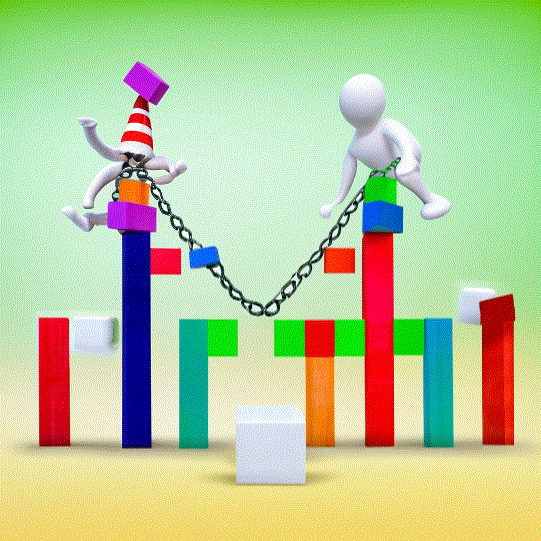
Blockchain for Total Beginners
This article aims to break down blockchain technology in simple terms.

The term “blockchain” has been buzzing in the tech world for years, but for many, it remains a mysterious and complex concept.
Fear not, total beginners; by the end, you’ll have a fundamental understanding of what blockchain is, how it works, and its potential to revolutionize various industries.
So, what is Blockchain?
At its core, a blockchain is a digital ledger, a record-keeping system for transactions. Imagine it as a shared, decentralized database that is maintained by a network of computers (nodes). Instead of a single entity or authority controlling it, the blockchain relies on consensus mechanisms to validate and add new information.
The “Block” and “Chain”
The name “blockchain” comes from how data is structured. Information is grouped into “blocks,” each containing a batch of transactions. Once a block reaches its capacity or a certain time interval, it’s sealed, linked to the previous block (hence, the “chain” part), and added to the ledger. This chain of blocks forms a chronological, immutable record of all transactions.
Decentralization and Security
Blockchain’s decentralization is its key feature. Unlike traditional systems, no central authority (like a bank) governs the blockchain. Instead, many participants (nodes) work together to validate and record transactions. This decentralization makes the system resistant to manipulation, fraud, or censorship.

Security is achieved through cryptographic techniques. Each block contains a unique code called a hash, which depends on its content and the previous block’s hash. Altering a single block would require changing the data in that block and all subsequent blocks, a practically impossible feat due to the immense computational power needed.
Types of Blockchains
There are primarily two types of blockchains:
Public Blockchains: Open to anyone, these blockchains are permissionless and transparent. Anyone can participate, view the ledger, and add transactions. Bitcoin and Ethereum are famous examples.
Private Blockchains: Controlled by a single entity or consortium, these blockchains are permissioned and typically used for specific business purposes. They offer more control but are less decentralized.
Smart Contracts
Blockchain isn’t just about recording transactions; it also enables “smart contracts.” These are self-executing agreements with the terms of the contract directly written into code. When predefined conditions are met, the contract automatically executes, eliminating the need for intermediaries in various industries, from finance to real estate.

Use Cases Beyond Cryptocurrency
While cryptocurrencies like Bitcoin are the most well-known applications of blockchain, the technology has far-reaching potential:
Supply Chain Management: Blockchain can track the journey of products from manufacturer to consumer, ensuring authenticity and reducing fraud.
Healthcare: Medical records can be securely stored on a blockchain, enhancing data security and accessibility.
Voting Systems: Blockchain can be used for secure and transparent electronic voting, reducing election fraud concerns.
Intellectual Property: Protecting copyrights and ensuring fair compensation for creators.
All in all
Blockchain technology is much more than just a buzzword. It’s a transformative force that has the potential to revolutionize industries and empower individuals. By understanding its core concepts — decentralization, security, and transparency — even total beginners can appreciate the profound impact that blockchain will have on our digital future. So, whether you’re a tech enthusiast or just curious, welcome to the world of blockchain, where innovation knows no bounds.
Thanks for reading!


